The Most Common Signs of Carpenter Ant Infestation
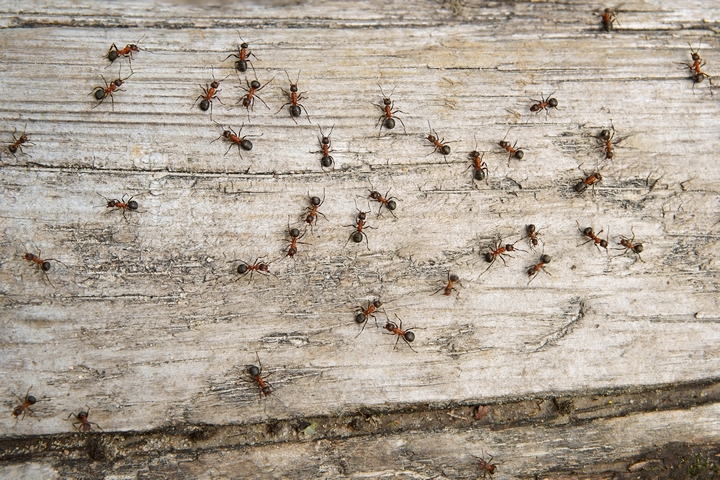
Carpenter ants can be disastrous in your house if you do not notice them early. They are more destructive than termites and cause substantial damage to wood, altering the stability of your building.
It may be challenging to control carpenter ants, especially after a large infestation. Therefore, you must ensure that no ant remains behind after elimination, necessitating a professional pest control service. Even a few ants can reproduce to create massive colonies. Once you clear your home of these wood enemies, it will help to prevent future attacks by sealing all crevices within the building.
It is easy to mistake carpenter ants for the common black ant; they have some distinct differences. So, if you are unsure if you have these destructive creatures in your home, here are some warning signs.
Sign #1: Heaps of Saw Dust or Shaving around Baseboards
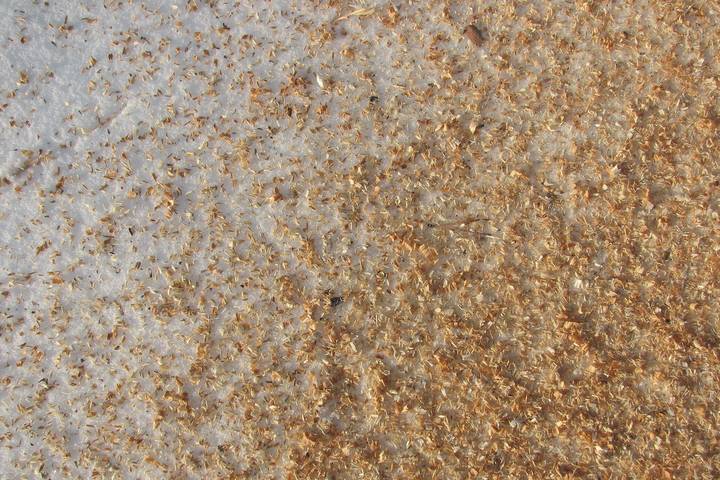
These ants create tunnels in the wood where they live as they do their activities. Therefore, if they infest your house, you will likely notice piles of wood shavings and sawdust around wooden areas of the house. Check the areas near the door, baseboard, or window sills.
In addition, these ants prefer moist wood since they dig using their teeth, which will help to check damp areas. Sometimes you may find tiny cramps of other insects the ants feed on and dispose of. You do not want to live with carpenter ants in your house, so it would be best to regularly check the besetment, crawl spaces, and damp wooden areas.
Sign #2: Large Flying Black Ants
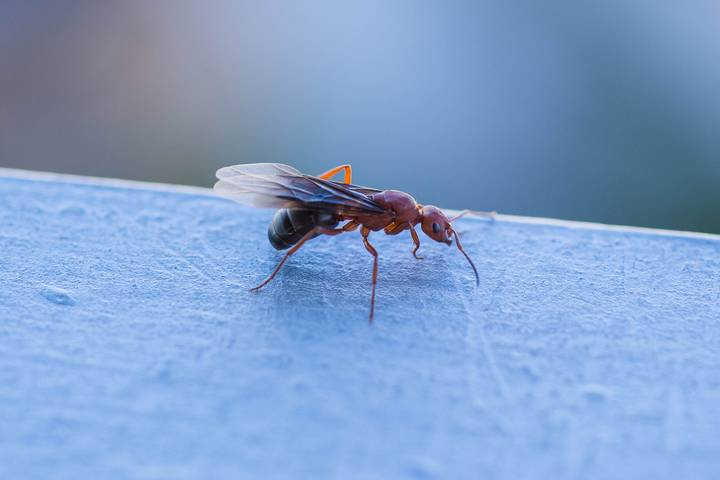
Sometimes you see large winged ants or wing remains on the window sills or other crevices. The reproductive colony leaves the colony to come out and reproduce to create new colonies of carpenter ants. Therefore, wing remnants can indicate a mature carpenter ant colony in your building.
Moreover, a reproductive colony means the ants are not new in your house. At this point, it is advisable to seek professional assistance in identifying their hideouts and terminating the colonies entirely.
Sign #3: Polished Wood Damage
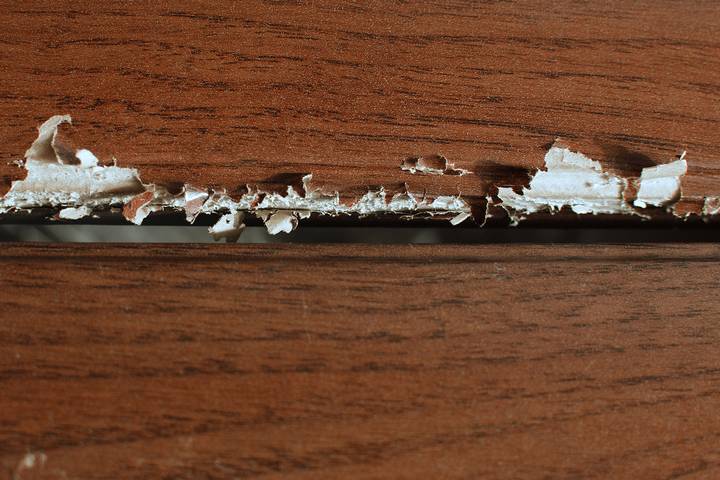
Sometimes you might find distinguishing between termites’ and carpenter ants’ damage difficult. Therefore, you must examine the wood carefully before concluding. Carpenter ants leave the wood smooth and polished with a sandpaper texture.
Furthermore, you will notice holes of various sizes in places where carpenter ants kick out debris. On the contrary, termite debris contains mud and soil particles of almost uniform sizes. With continued infestation, the wood affected by carpenter ants weakens, putting the structure at risk of collapsing from the numerous holes in the ants’ galleries.
Sign #4: Carpenter Ants are Enormous
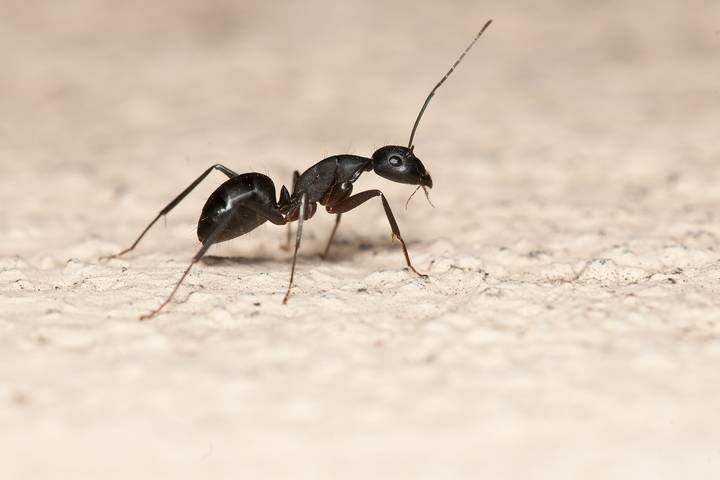
Differentiating carpenter ants from other types, like the common black ants, is challenging for many homeowners. Black ants are frequent visitors to any home, especially in the kitchen. Since these visitors are often harmless, you may ignore them or fail to take urgent action.
However, with close examination, you can tell a carpenter ant from a black one in size; a black ant is almost five times smaller than the latter. Furthermore, carpenter ants have wings while the latter do not, making them easily distinguishable.
Another distinguishing feature is the round head in black ants and the heart-shaped one in the carpenter species. While you can distinguish ant species by colour, this will not be reliable since there are numerous types of carpenter ants in various colours.
Sign #5: Rustling Sounds in Woodworks and Walls

A mature colony of these ants can have about 3000 members, except large colonies with about ten to twenty thousand. Still, you can find a colony with up to 100,000 ants. You may not notice when these creatures invade your home as they are tiny, few, and less noisy. However, as the colonies grow, you can hear them tunnelling their homes in your wooden structures.
They produce a rustling sound as they move through the wood. Therefore, if you hear the soft sound once, it would be helpful to pay closer attention. The best way is to listen keenly when the house is silent, especially at night. It will also do you good to try tapping the wood to see if it sounds hollow. This is another way to know if you have these visitors in your home.
Sign #6: Visible Wood Damage
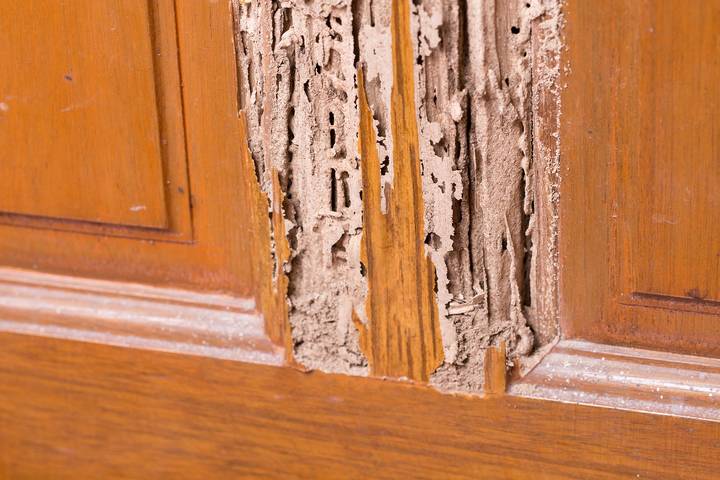
One of the most obvious signs of carpenter ants’ infestation is the evidence of wood damage. You may notice this from external wooden stuff like fence posts, outbuildings, sheds, or garage doors.
Nevertheless, you should not confuse termite damage with carpenter ant damage.
The presence of damage in the external areas should prompt you to check the inside of your building. These ants attack almost every wooden component. So, you may start with the door frames and window sills. Sometimes you may notice damage but no other sign of these ants in your house. In such a case, it is advisable to involve professional pest control experts to help identify and eliminate these harmful creatures.
